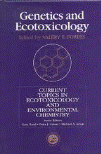Papers in the Biological Sciences
Date of this Version
2004
Citation
Aquatic Toxicology 67:3 (April 28, 2004), pp. 287–299; doi: 10.1016/j.aquatox.2004.01.015
Abstract
The aim of the present study was to examine the effects of a short and environmentally realistic pulse exposure of different life stages of the freshwater amphipod, Gammarus pulex, to the pyrethroid insecticide, esfenvalerate. We were particularly interested in determining the extent to which detectable effects on key life-history traits persisted following cessation of a brief exposure to this pesticide. Our results indicate that environmentally realistic exposure concentrations of this widely used insecticide can have a significant effect on the survival and reproduction of Gammarus pulex. Comparison of LC50 values indicates that G. pulex has a similar sensitivity to esfenvalerate as the standard test invertebrate, Daphnia magna and is more sensitive than other common stream invertebrates. Despite 100% survival during pulses of up to 2 μg l−1, mortality increased, in some cases markedly, following transfer to clean conditions. Pulse exposure to esfenvalerate at concentrations in the range 0.1–0.6 μg l−1 for as little as 1 h can have effects on G. pulex survival, pairing behavior, and reproductive output that can still be detected at least 2 weeks following the pulse. Reproductive traits were very sensitive to esfenvalerate, and exposure to 0.05 μg l−1 for 1 h led to immediate disruption of reproducing pairs, release of eggs or offspring from the brood pouch, and substantial delays in pair formation and subsequent reproduction following transfer to clean water. The kinds of effects on reproductive behavior observed in this study could potentially impact the population dynamics of G. pulex in the field. Whether such effects occur will depend on the frequency, duration, timing, and spatial extent of pesticide exposure in freshwater stream ecosystems, about which relatively little is known. Such information is essential if effects on non-target aquatic species are to be more accurately assessed.


Comments
Copyright © 2004 Elsevier B.V. Used by permission.